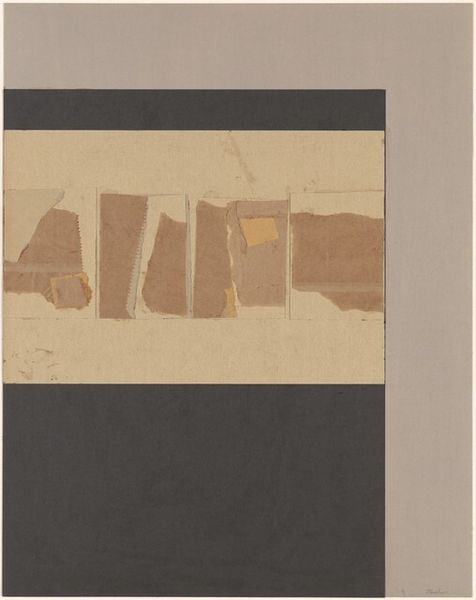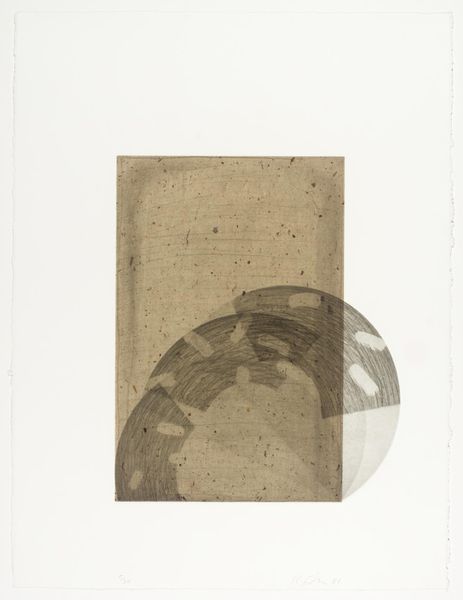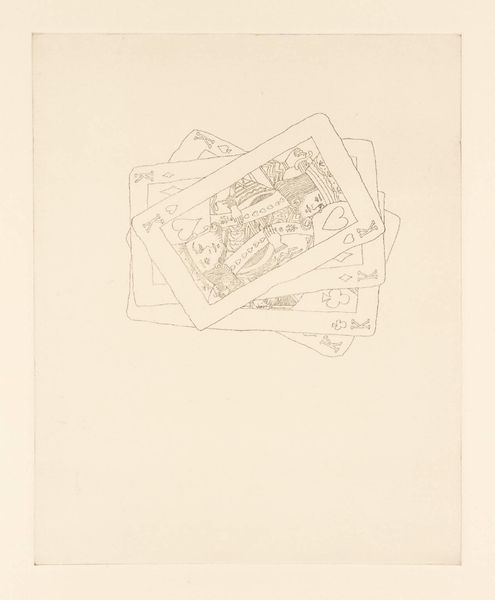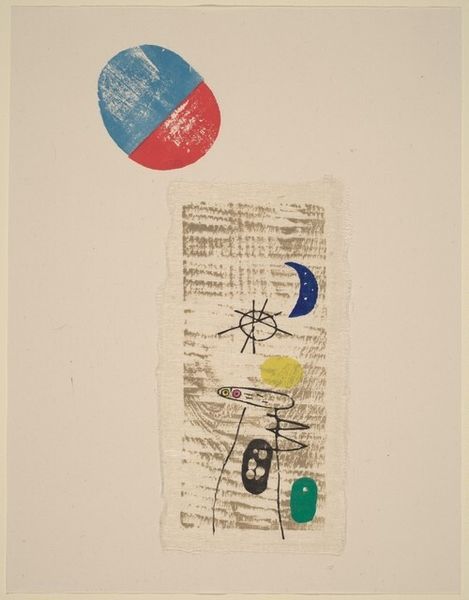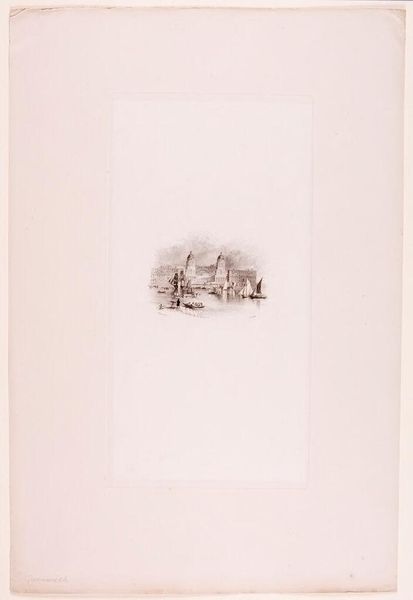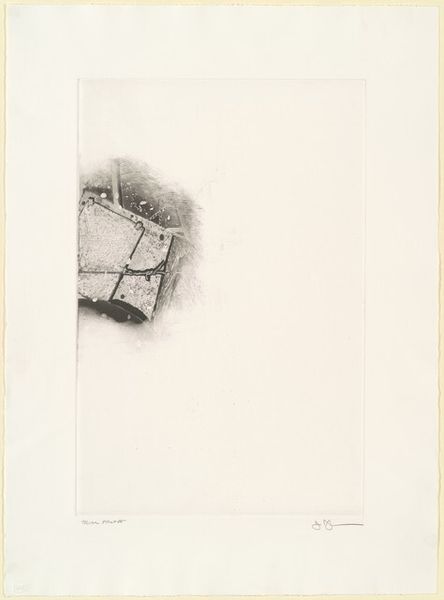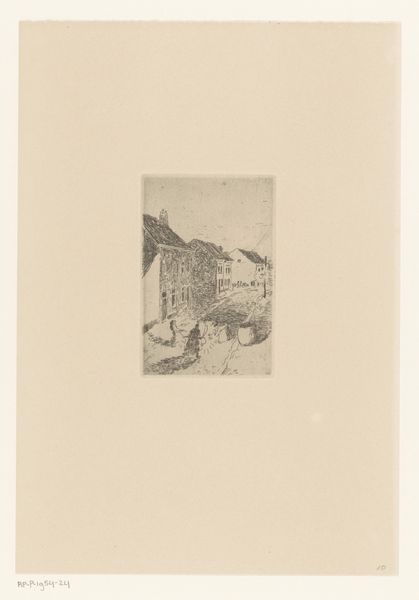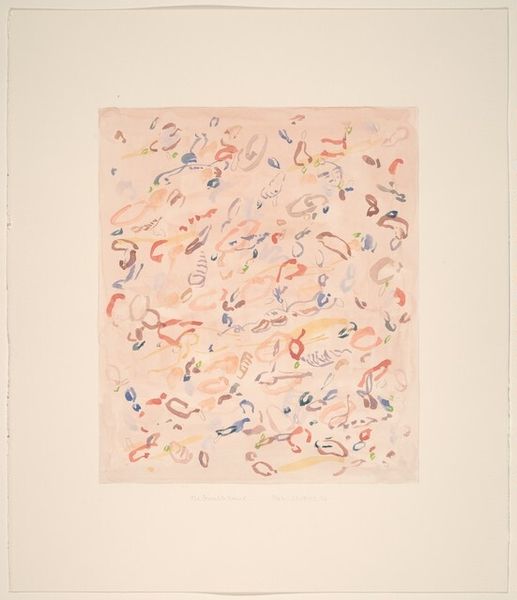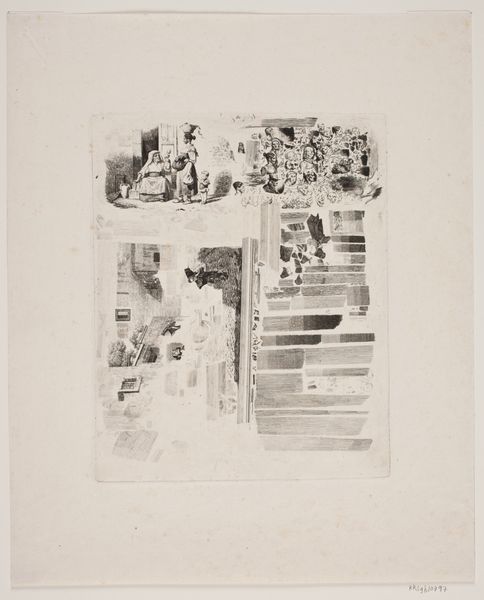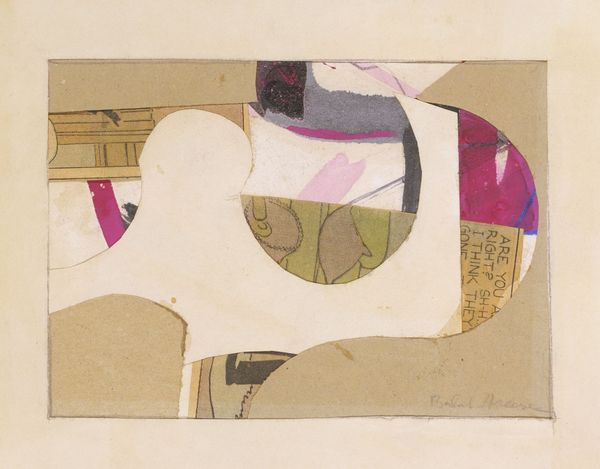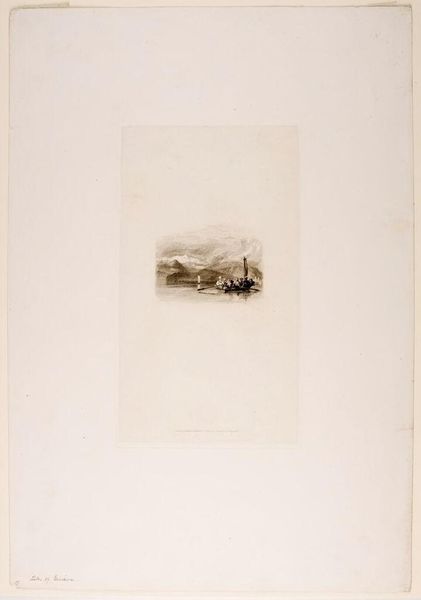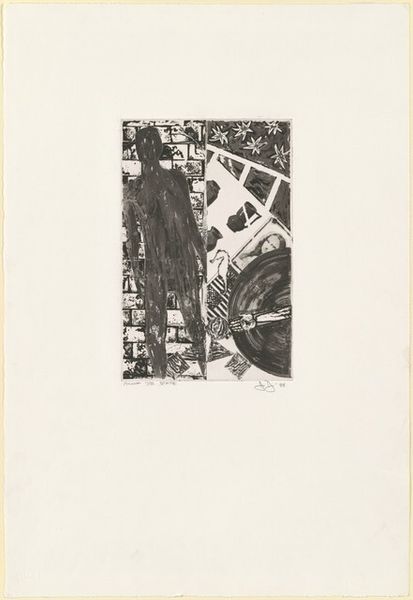
Dimensions: sheet: 27.2 × 24.9 cm (10 11/16 × 9 13/16 in.)
Copyright: National Gallery of Art: CC0 1.0
Curator: Kurt Schwitters’ “Merz 30, 7” from 1927 is a compelling piece. It combines collage and assemblage with paper and mixed media elements. Schwitters was, of course, a key figure in the Dada movement. Editor: Well, it definitely grabs you. A jumble, almost… a beautiful kind of controlled chaos. The colors are so muted, almost like looking at old, faded memories layered one on top of another. I wonder what he was feeling when he made it? Curator: Schwitters coined the term “Merz” to describe his individual brand of Dada. He felt constrained by the anti-art stance of other Dadaists. It was about total freedom, absorbing everything into art. Scraps of everyday life are repurposed. Editor: Freedom… I feel that looking at it. It's like permission to break the rules. To just gather up all the fragments of your day, or your life, and see if they fit, even if they clash. The bits of printed text add such a curious layer. Curator: Exactly. These pieces of ephemera—fragments of posters, tickets, packaging—aren't just randomly placed. Schwitters carefully considered the composition, the balance of forms and colors, the rhythm created by the juxtaposition of elements. Note the geometric forms throughout. Editor: It does feel balanced. Initially I thought it was haphazard, but you're right; there’s a distinct organization to it all. It has weight and depth. A fascinating dance between control and chance, almost. You see that large "G," its typeface a real punch! And the script nearby. Did it once mean something practical before Schwitters unearthed it? Curator: More than likely, yes. The 'Merz' works became, in a sense, portraits of their time, constructed from the detritus of Weimar Germany. The collage, in his hand, spoke to anxieties and disruptions. Editor: I get that sense, of being both grounded in a time, but also utterly timeless. The universality is strange. One man's trash is, invariably, another man's treasure. He found a poignancy in what others discarded. Curator: Indeed, Schwitters challenged conventional notions of beauty, finding aesthetic potential in the overlooked and discarded. The ‘Merz’ philosophy suggests everything is material for art. Editor: So, in a way, it's not just about the aesthetic result. But the act of assembling these fragments? Perhaps that becomes equally as significant. Curator: Absolutely. The gesture of finding beauty and order within the chaotic abundance of the modern world. He gave voice to it. Editor: I find that incredibly hopeful, somehow. Looking closely you notice details that may have gone previously unseen. A reminder that even within the mess of things, there can be moments of clarity and connection.
Comments
No comments
Be the first to comment and join the conversation on the ultimate creative platform.
